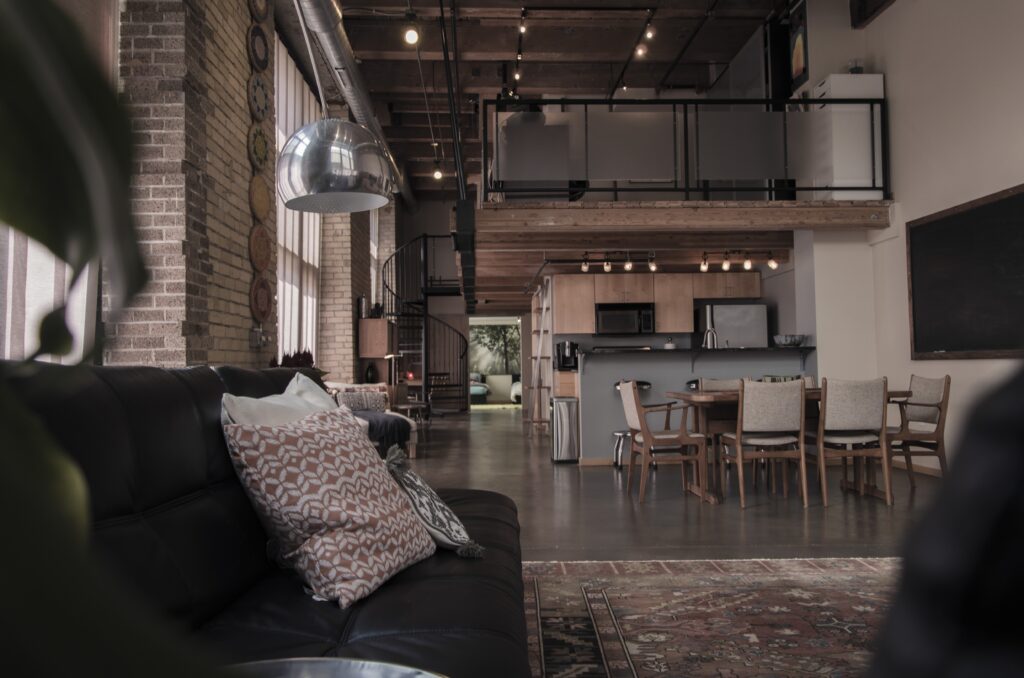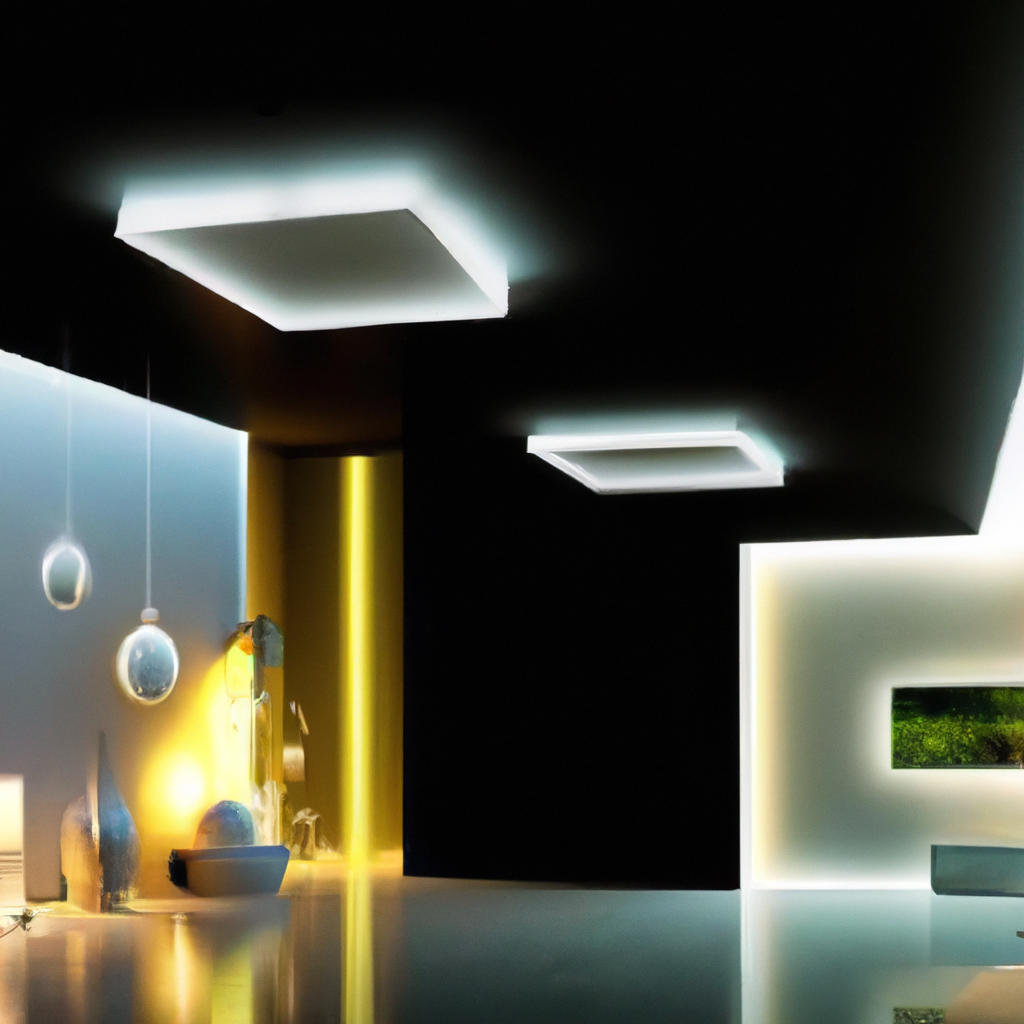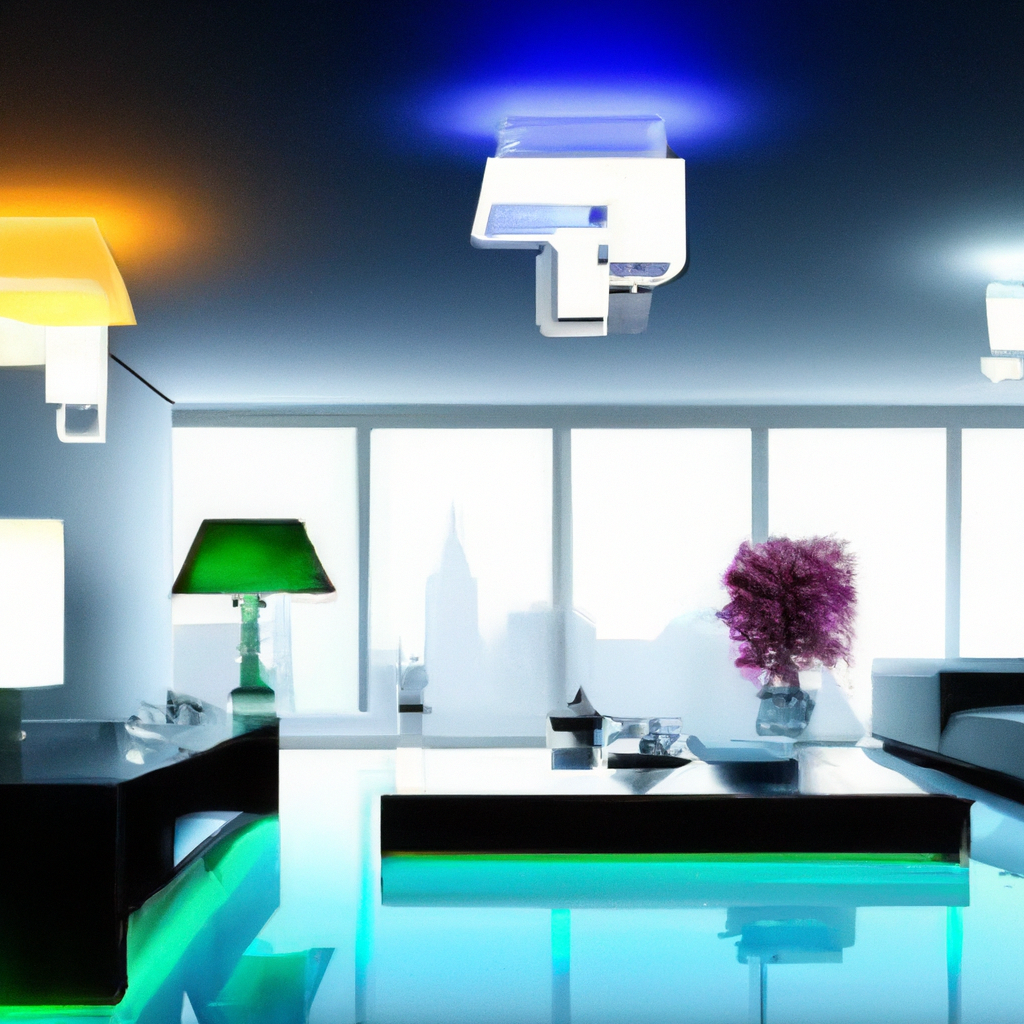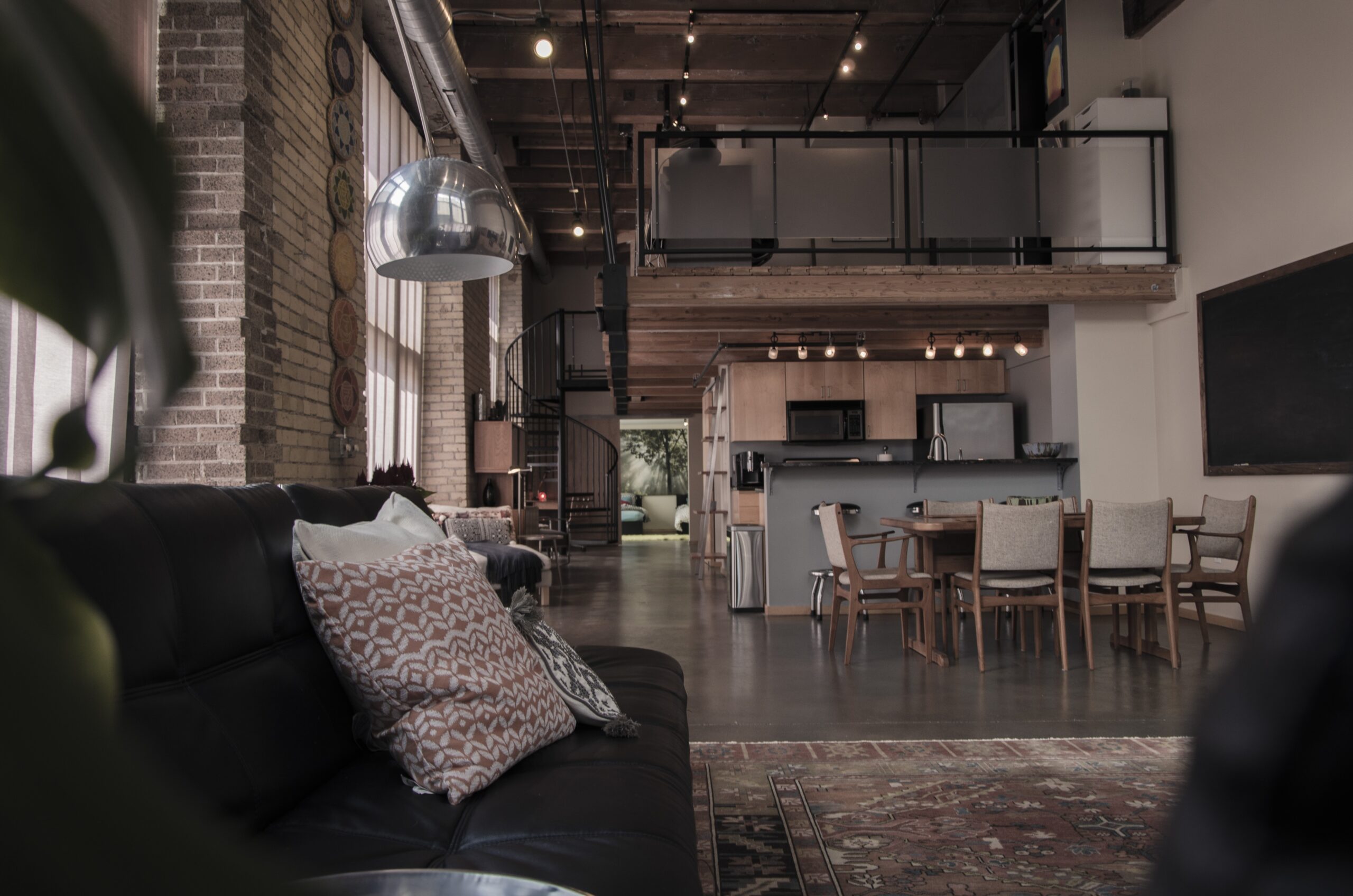Imagine walking into your home after a long day and instantly feeling a sense of relaxation and tranquility, all thanks to the warm and inviting glow of your smart lights. With just a simple voice command or a tap on your smartphone, you can effortlessly set the mood in any room, whether it’s a cozy and intimate atmosphere for a romantic dinner or a vibrant and energetic ambiance for a lively gathering with friends. Smart lights not only provide the convenience of controlling your lighting with ease, but they also offer a plethora of customizable options that can enhance the overall mood and aesthetic of your home, making every moment spent there an unforgettable experience.

1. Understanding Smart Lights
1.1 What are smart lights?
Smart lights are a type of lighting technology that can be controlled remotely using different methods, such as smartphone apps or voice commands. They allow you to customize the lighting in your home to create the desired ambiance and atmosphere. Unlike traditional lighting, smart lights offer various features and options to enhance your overall lighting experience.
1.2 Types of smart lights
There are several types of smart lights available in the market today. The most common ones are smart light bulbs and smart light strips. Smart light bulbs are designed to be easily installed into existing light fixtures, while smart light strips are flexible strips that can be attached to various surfaces. Other types of smart lights include smart lamps, smart switches, and smart lighting systems that control multiple lights simultaneously.
1.3 Benefits of using smart lights
Using smart lights in your home can bring a multitude of benefits. Firstly, they allow you to create different lighting scenes and moods according to your preferences and needs. You can easily adjust the color, brightness, and even dynamic lighting effects to set the perfect ambiance for any occasion. Secondly, smart lights offer convenience by enabling remote control through smartphone apps or voice commands. This means you can turn on or off the lights, adjust settings, and even create schedules or automation even when you’re not at home. Lastly, smart lights are energy-efficient, eco-friendly, and can potentially help you save on energy costs in the long run.
2. Creating the Desired Ambiance
2.1 Customizing lighting for different moods
One of the major advantages of smart lights is the ability to customize the lighting for different moods. Whether you want a bright and energizing atmosphere for a productive work session or a cozy, warm ambiance for a relaxing evening, smart lights have got you covered. With a few taps on your smartphone or a simple voice command, you can instantly transform the lighting in any room to match your desired mood.
2.2 Setting up color schemes
Smart lights often come with RGB color options, allowing you to choose from a wide range of colors to suit your preferences. You can create your own color schemes or select from pre-set options to match different themes or occasions. For example, you can set a romantic red hue for a date night or a calm blue shade for a peaceful bedtime routine. The ability to easily switch between different color schemes gives you endless possibilities to personalize your lighting experience.
2.3 Adjusting brightness levels
In addition to color customization, smart lights also offer the flexibility to adjust brightness levels. Whether you prefer a bright and vibrant setting or a softer, more subdued ambiance, you can easily dim or brighten the lights to your liking. This feature is particularly useful during different times of the day or for specific activities, such as watching a movie or hosting a dinner party.
2.4 Syncing lights with music and movies
Another exciting feature of smart lights is the ability to sync them with music and movies. Some smart lighting systems come with built-in music sync capabilities, allowing the lights to automatically change colors or pulsate in sync with the rhythm of the music. This can create a dynamic and immersive experience, especially during parties or gatherings. Additionally, by connecting your smart lights to your TV or home theater system, you can enhance your movie-watching experience by extending the visuals beyond the screen and creating a more immersive atmosphere.
3. Controlling Smart Lights
3.1 Using smartphone apps
Controlling your smart lights through dedicated smartphone apps is one of the most common and convenient methods. These apps provide a user-friendly interface where you can easily access and control all the features of your smart lights. From adjusting color and brightness settings to creating schedules and automation, you have complete control at your fingertips. Most smart lighting apps also offer additional features such as color picking, scene presets, and the ability to group or control multiple lights simultaneously.
3.2 Voice control with virtual assistants
If you prefer a hands-free approach, many smart lights are compatible with popular virtual assistants, such as Amazon Alexa, Google Assistant, or Apple Siri. By simply giving voice commands, you can turn the lights on or off, adjust brightness and colors, and even activate pre-set scenes or routines. This voice control feature adds an extra layer of convenience, allowing you to control your lights while cooking, relaxing on the couch, or even from a different room.
3.3 Scheduling and automation
Smart lights also offer the advantage of scheduling and automation. Through the smartphone app or virtual assistant, you can create schedules to automatically turn on or off the lights at specific times. This is particularly useful for simulating occupancy when you’re away from home or for establishing a consistent lighting routine. Moreover, you can set up automation rules to trigger specific actions based on certain conditions or events. For example, you can configure the lights to turn on automatically when you enter a room or when you receive a notification on your phone.
4. Smart Lighting Features
4.1 RGB color options
Most smart lights come with RGB color options, which allow you to choose from a vast spectrum of colors. RGB stands for red, green, and blue, and by combining different intensities of these primary colors, you can create millions of unique shades. This feature enables you to experiment with various color combinations and find the perfect lighting to match your mood or event.
4.2 Dynamic lighting effects
In addition to static color options, smart lights often offer dynamic lighting effects. These effects can range from subtle transitions between colors to vivid lighting patterns that pulse, fade, or strobe. These dynamic effects add a touch of fun and excitement to your lighting, making them perfect for parties, game nights, or even just to set a lively ambiance.
4.3 Motion sensors
Some smart lights are equipped with motion sensors, which can be particularly useful in areas such as hallways or bathrooms. These sensors detect movement and automatically turn on the lights, providing convenient hands-free illumination. This feature not only adds a layer of convenience but also contributes to energy savings by ensuring that lights are only on when needed.
4.4 Geolocation-based automation
Certain smart lighting systems also leverage geolocation technology to provide automation based on your location. By using GPS or Bluetooth technology, the lights can detect when you leave or arrive at home and automatically adjust the lighting accordingly. For example, as you approach your house, the system can turn on the lights in the entryway to welcome you home. This seamless integration with your daily routine enhances convenience and ensures that your lighting is always optimized for your needs.

5. Integrating with Smart Home Systems
5.1 Compatibility with popular smart home platforms
Smart lights are designed to integrate smoothly with popular smart home platforms, such as Amazon Alexa, Google Assistant, or Apple HomeKit. This compatibility allows you to control your lights alongside other smart devices, such as thermostats, security systems, or entertainment systems, all from a centralized platform. The ability to create custom scenes or routines that involve multiple devices further enhances the overall smart home experience.
5.2 Integration with other smart devices
In addition to smart home platforms, smart lights can also integrate with other smart devices through the use of If This Then That (IFTTT) platforms. This allows you to create custom automation rules that connect your lights with various triggers or actions. For example, you can configure your lights to turn on when a security camera detects motion, or you can have them flash red in case of an emergency. This flexibility in integration offers endless possibilities for creating a truly interconnected and intelligent home environment.
6. Energy Efficiency and Cost Saving
6.1 LED technology
Most smart lights utilize LED (Light Emitting Diode) technology, which is known for its exceptional energy efficiency. LEDs consume significantly less energy compared to traditional incandescent or fluorescent bulbs, resulting in lower electricity bills. Moreover, LEDs have a longer lifespan, reducing the frequency of bulb replacements and further contributing to cost savings in the long run.
6.2 Dimming capabilities
Another energy-saving feature of smart lights is the ability to dim the lights. By adjusting the brightness level, you can reduce the energy consumption of your lights while still maintaining an adequate level of illumination. Dimming not only helps conserve energy and prolong bulb lifespan but also helps create a more comfortable and relaxing ambiance.
6.3 Energy monitoring and optimization
Some smart lighting systems offer energy monitoring and optimization features. These features provide insights into your energy consumption patterns, allowing you to identify areas where you can further optimize or reduce energy usage. By understanding your lighting habits, you can make informed decisions to maximize energy efficiency, lower your carbon footprint, and contribute to a more sustainable home environment.

7. Enhanced Security and Safety
7.1 Smart lights as deterrents
Smart lights can serve as effective deterrents against potential intruders or burglars. By integrating your smart lights with other security devices, such as motion sensors or door/window sensors, you can create a comprehensive security system for your home. For example, when motion is detected outside your house, the lights can turn on automatically, giving the illusion of occupancy and deterring any suspicious activity.
7.2 Remote control and monitoring
The ability to remotely control and monitor your smart lights also enhances security and safety. If you’re away from home or on vacation, you can use the smartphone app to turn the lights on or off at different times, simulating occupancy and ensuring that your home looks lived-in. Additionally, some smart lighting systems allow you to receive notifications on your phone if any unusual activity is detected, such as a light being turned on while you’re away or a sudden change in lighting patterns.
7.3 Emergency lighting features
In the event of a power outage or emergency situation, smart lights can provide valuable assistance. Many smart lights have built-in battery backup or emergency lighting features, which means they can continue to provide illumination even when the power goes out. This can be particularly useful during nighttime or in areas where visibility is crucial, such as staircases or hallways. Having reliable emergency lighting can improve safety and peace of mind for you and your family.
8. Installation and Setup
8.1 Replacing existing bulbs
Installing smart lights is generally a straightforward process. For smart light bulbs, all you need to do is replace your existing bulbs with the smart ones. Make sure that the smart bulb is compatible with your existing light fixtures and follow the manufacturer’s instructions for installation. Smart light strips or lamps may require a bit more setup, such as attaching the strips to the desired surface or plugging in the smart lamp. In any case, it’s essential to carefully read and follow the provided instructions to ensure a successful installation.
8.2 Connecting to a smart lighting system
To take full advantage of the features and capabilities of your smart lights, you’ll need to connect them to a smart lighting system. This usually involves connecting the smart lights to a central hub or a dedicated bridge device provided by the manufacturer. The hub acts as the communication hub between your smart lights and your control devices, such as your smartphone or virtual assistant. Follow the manufacturer’s instructions to set up the connection and ensure that all devices are on the same network for seamless control.
8.3 Configuring settings and preferences
Once your smart lights are installed and connected, it’s time to configure the settings and preferences according to your needs. Download the relevant smartphone app for your smart lights and follow the setup process to connect the lights to your app. From there, you can explore the various customization options for color, brightness, and automation. Take some time to familiarize yourself with the app and experiment with different features to create personalized lighting experiences that suit your lifestyle.

9. Overcoming Challenges
9.1 Network connectivity issues
Like any other smart home device, smart lights may occasionally encounter network connectivity issues. Some challenges may include weak Wi-Fi signals, interference from other devices, or distances between the lights and the router. To overcome these challenges, ensure that your Wi-Fi network is stable and positioned correctly to provide optimal coverage. You can also consider using Wi-Fi extenders or mesh Wi-Fi systems to improve coverage in areas that are farther away. Additionally, keeping the firmware of your smart lights and router up to date can help resolve connectivity issues.
9.2 Compatibility problems
Another challenge you may face is compatibility problems between different smart devices or platforms. Before purchasing smart lights, it’s crucial to check their compatibility with your existing smart home platform or virtual assistant. Additionally, ensure that all devices are using the same communication protocols, such as Zigbee or Z-Wave, for seamless integration. It’s also a good idea to research user reviews or consult with professionals to ensure compatibility before making a purchase.
9.3 Learning curve for new users
For users who are new to smart home technology, there may be a learning curve involved in setting up and utilizing smart lights to their full potential. Take the time to read the manufacturer’s instructions carefully and explore online resources or tutorials to better understand the features and capabilities of your smart lights. Many manufacturers provide dedicated customer support or online communities where you can seek assistance or advice from experienced users. With a bit of patience and exploration, you’ll soon become comfortable with managing your smart lights and creating personalized lighting experiences.
10. Smart Lighting Trends and Future Possibilities
10.1 Integration with IoT devices
As the Internet of Things (IoT) continues to expand, smart lights are likely to integrate with a broader range of devices and systems. Imagine a future where your smart lights seamlessly interact with your smart thermostat, door locks, or even kitchen appliances. This integration can create a more cohesive and intuitive smart home experience, where different devices work together to enhance comfort, convenience, and efficiency.
10.2 Advancements in smart lighting technology
The field of smart lighting technology is evolving rapidly, with manufacturers constantly introducing new features and advancements. We can expect to see innovations such as improved color accuracy, higher brightness outputs, and even more dynamic lighting effects. Additionally, advancements in wireless communication protocols and machine learning algorithms may lead to smarter, more intuitive smart lighting systems that adapt to your preferences and anticipate your needs.
10.3 Personalized lighting experiences
Personalization will continue to be a key trend in smart lighting. Manufacturers are likely to introduce more sophisticated customization options, allowing users to fine-tune every aspect of their lighting. This may include features such as personalized lighting presets based on individual preferences, integration with wearables to adjust lighting based on your mood or energy levels, or even the ability to replicate natural lighting conditions throughout the day for improved well-being.
In conclusion, smart lights have revolutionized the way we illuminate and control our homes. With their ability to create the desired ambiance, convenient controls, and a wide range of features, smart lights offer a truly transformative lighting experience. Whether it’s setting the perfect mood for a cozy evening, enhancing security and safety, or optimizing energy efficiency, smart lights have something to offer for everyone. As technology continues to advance, we can only expect smarter, more intuitive, and personalized lighting experiences in the future. So go ahead and embrace the smart lighting revolution to transform your home into a haven of light and ambiance.











